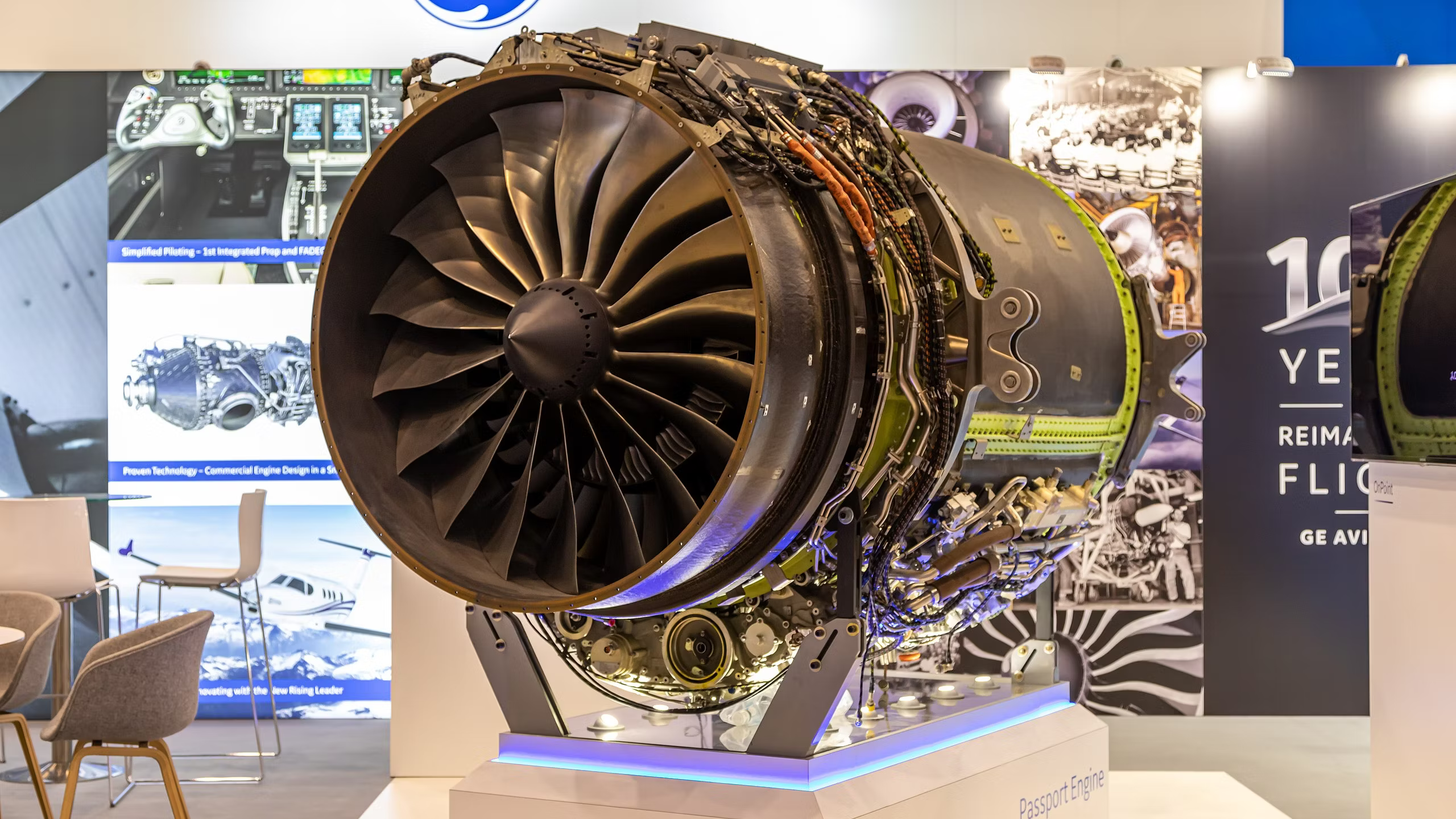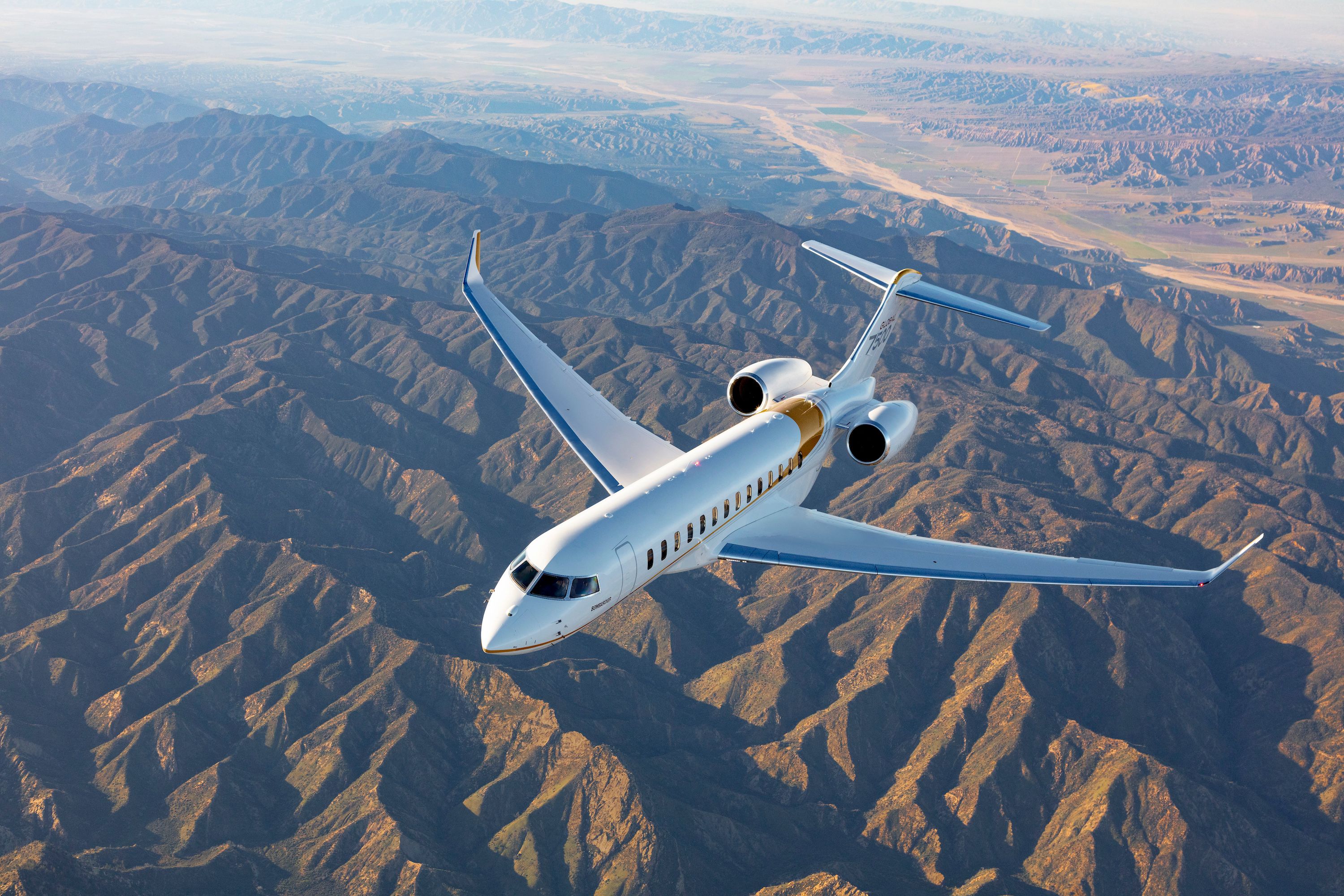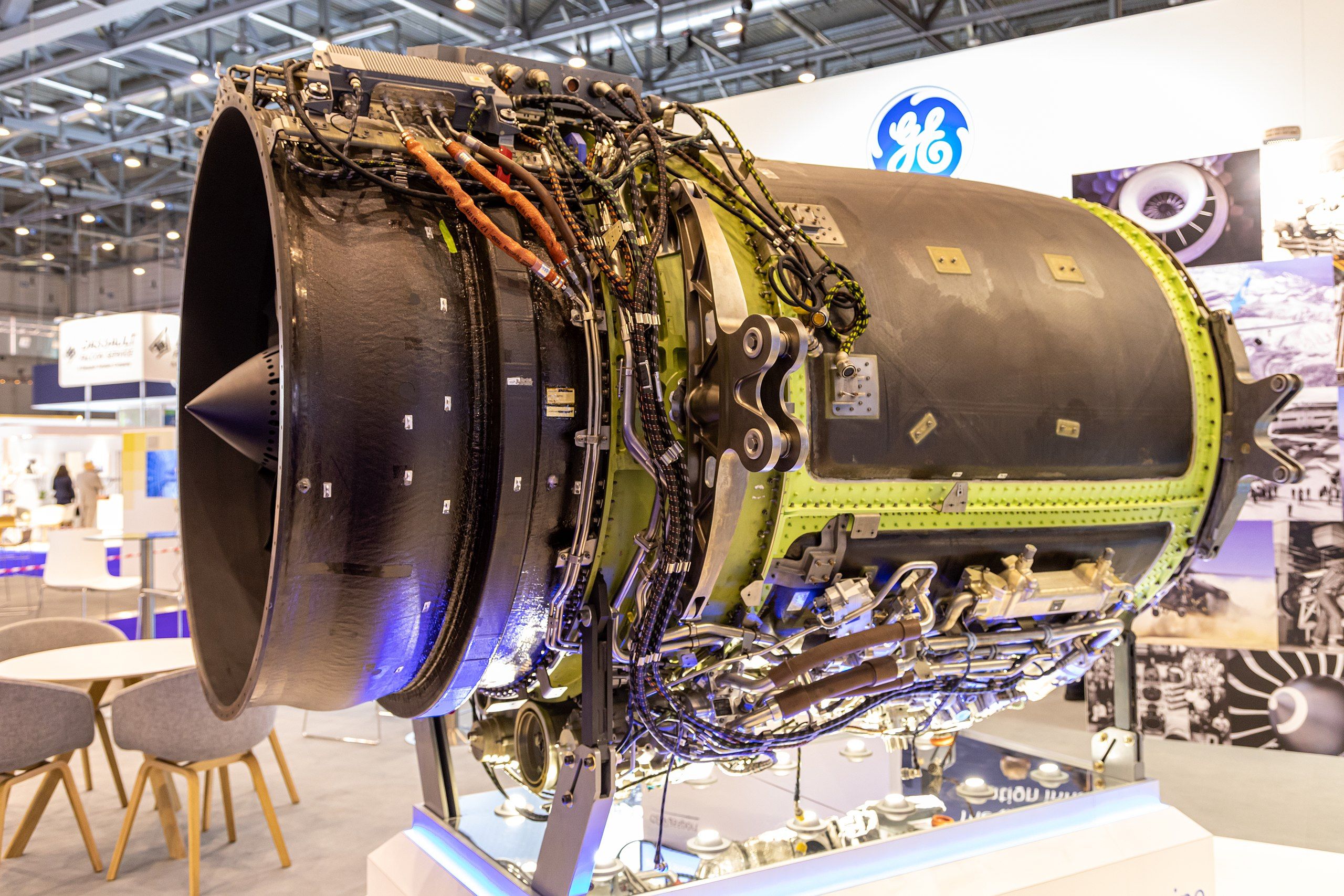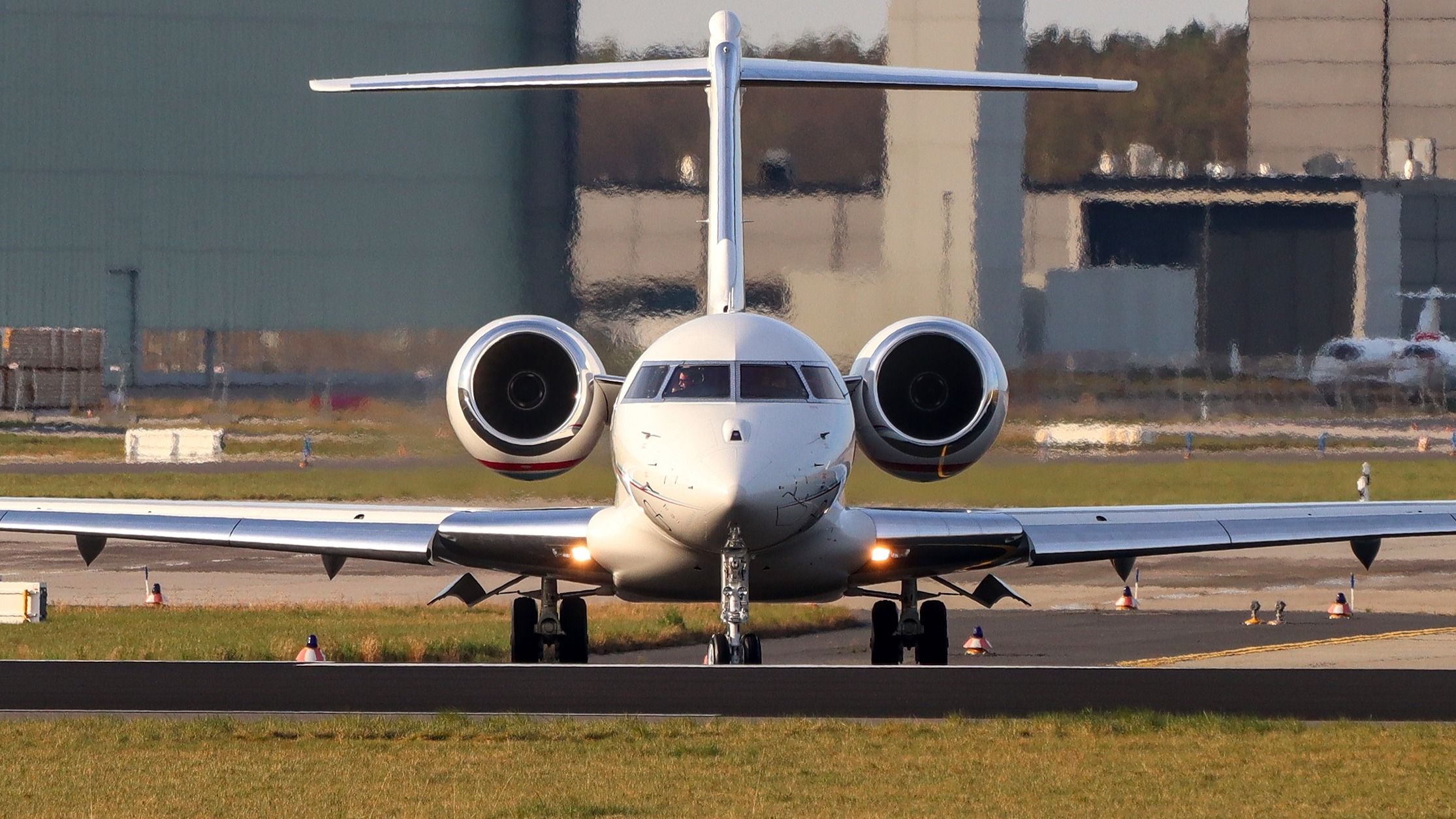The General Electric Passport is a derivative of the CFM International LEAP engine. The high bypass ratio engine can produce nearly 19,000 pounds-force (85 kN) of thrust at takeoff. GE is a maker of the CF-34 engines that currently power some business and regional jets.
Being a 50% partner in CFM International (with Safran Aerospace), GE has been working on a new-generation engine, Tech X, for new business jets. A modified version of the successful CFM LEAP engine was the best choice for the Bombardier Global 7500 and 8000 series of jets.
Bombardier Global 8000
The Bombardier G8000 is the longest-range aircraft of the Global family that is set to enter the market in 2025. It is based on the Global 6000 but features a new transonic wing design. The wing is one of the aircraft’s unique features, providing it the unbeatable speed and efficiency in its class. The thinner thickness-to-chord ratio wing results in much lower drag and improved performance at various flight regimes.
Photo: Bombardier
The double-slotted inboard Flower flaps enhance lift performance at low speeds. The 35.3-degree swept design is optimized for Mach 0.85. The aircraft can reach a maximum speed of Mach 0.94 (539 knots, 999 km/h). With a seating capacity of up to 19 passengers, the aircraft can fly a range of 8,000 nautical miles (14,800 km). The two GE Passport turbofan engines produce 18,920 pounds-force (84.2 kN) of takeoff thrust each.
According to Bombardier,
“The Global 8000 private jet is the flagship for a new era where the fastest speed, the longest range and the smoothest ride converge in a single business aircraft with proven reliability and the healthiest, best-connected cabin in the industry.”
The GE Passport Engine
GE Aerospace was working on an efficient engine design for the new-generation business jets, and it decided to use the CFM LEAP architecture as the starting point for the new engine. Previously named as Tech X, GE aimed at a smaller-sized engine in the range of 14,000 to 20,000 lbf (62 – 89 kN).
In 2010, Bombardier selected the engine for its Global 7500 aircraft, further enhancing the development and testing activities at GE. The engine was renamed to Passport following the initial development and testing of multiple modules. According to GE,
“Designed specifically for the Global 7500 and new 8000, Bombardier’s latest and most elite ultra-long-range business jet, the Passport™ has enabled this new-generation turbofan engine aircraft to power through 8,225 nautical miles on a single tank of fuel, during a record-breaking flight between Sydney and Detroit. Additionally, the new Passport-powered Global 8000 has a top speed of Mach 0.94, which is the fastest ever in business aviation.”
The engine’s efficiency comes from its high-pressure compressor design that uses five combined bladed disks (blisks), minimizing the engine weight and complexity. Instead of having individual blades installed on the disks, blisks are single parts comprising the disk and rotating blades. Blisks are designed using various techniques, including additive manufacturing, welding, and metal casting.
Photo: ThaKlein | Shutterstock
GE states that the Passport is much more fuel-efficient than its predecessors and competitor engines in the market. Moreover, the engine is quieter during operation thanks to its ultra-efficient design, making for a unique customer experience.
The engine performed its first flight in 2015 and received the regulatory certification a year later. In 2018, the engine entered commercial service with the 16,500 lbf (72.5 kN) variant installed on the Bombardier Global 7500.
What are your thoughts on the GE Passport engine and its capabilities in powering the Bombardier Global aircraft?




